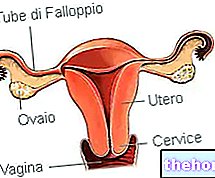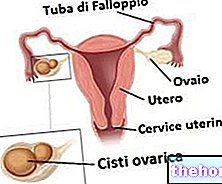Paget's disease of the breast occurs most often in people over the age of 50 and affects 1 to 2 in 100 women with breast cancer. The condition may be misdiagnosed at first, as symptoms are similar at onset to those caused by some benign skin conditions. Paget's disease of the nipple is often associated with other forms of breast cancer and usually is treated in the same way, so surgery is likely to be needed. The outlook for patients with Paget's disease of the nipple depends on a variety of factors, including the presence or absence of an invasive carcinoma of the affected breast and possibly spread to nearby lymph nodes. If Paget's disease is detected and treated in its early stages, there is a good chance of recovery.

See: Photo Paget's Disease of the Nipple
Paget's disease affects the skin on one nipple and can extend to the areola (highly pigmented area surrounding the nipple) or other areas of the breast. Clinical signs usually involve only one breast.
Symptoms of Paget's disease of the nipple are easily confused with skin irritations (dermatitis or eczema) or other benign (non-cancerous) skin conditions.
Possible signs and symptoms of Paget's disease of the breast include:
- Dry, irritated or scaly skin, with symptoms often similar in appearance to eczema on the nipple, areola or both;
- Redness, itching, tingling, or burning sensation
- Straw-colored nipple discharge (lymphatic or purulent exudation from the nipple)
- Inversion or inversion of the nipple
- Breast lump.
Skin changes involving the nipple may begin and resolve within a short time or respond to topical treatment, making the skin appear to be healing. On average, the patient may experience limited to superficial signs and symptoms for 6-8 months before the correct diagnosis is made. In fact, the appearance of these inflammatory-like skin changes is indicative of a very serious underlying condition. To detect a probable lesion associated with Paget's disease, it may be helpful to regularly check the nipple and areola of both breasts during breast self-examination. If a lump or change in the appearance or shape of a breast is felt, or if itching and irritation appear that persist for more than a month, it is advisable to consult a doctor. The sooner a cancerous lesion is diagnosed, the greater are the possibility of successfully treating the pathology.
originating in the tissue behind the nipple (ductal carcinoma in situ) or in other parts of the breast (invasive carcinoma). In about half of all Paget's disease cases, a lump is found in the breast. The exact cause behind the condition is not yet understood, however.
The most accepted theory is that cancer cells derive from breast cancer and that they migrate through the milk ducts invading the surrounding breast tissue, including the nipple and areola. This would explain why Paget's disease of the breast and ductal breast cancer within the same breast are almost always associated.
A second theory is that the cells in the nipple and areola become cancerous independently. This would explain why some patients develop the malignant condition without having a tumor within the breast itself. Furthermore, it is possible that Paget's disease of the nipple and tumors within the same breast may develop as a result of two distinct neoplastic processes.
The risk factors that influence the likelihood of developing Paget's disease of the nipple are the same as those that predispose to the development of other types of breast cancer.
Most people with Paget's disease also have one or more tumors within the same breast. In addition to the nipple biopsy, the doctor must perform a clinical breast exam to physically check for any unusual areas. examination, the doctor checks the appearance of the skin around the nipples and whether there are any lumps, areas of thickening or other changes: 50% of people with Paget's disease of the nipple have a lump that can be detected during an examination breast clinic.
The doctor may order other investigations to confirm the diagnosis, such as:
- Mammogram: This is an X-ray examination of breast tissue, which can indicate whether nipple changes are associated with breast cancer. If the mammogram results in both breasts reveal no signs of cancer, your doctor may do an "ultrasound" or MRI scan to look for any tumors that can't be detected with mammography.
- MRI: is often used to assess the extent of breast cancer. The results can help determine which surgical procedure should be performed.
- Sentinel lymph node biopsy: In the case of invasive breast cancer, the sentinel lymph nodes under the arm (axillary lymph nodes) should be examined, the first to be reached by any metastases in the presence of malignant tumors. During the procedure, the surgeon locates a lymph node and removes it to see if cancer cells have spread to this area.
Paget's disease of the nipple may be "misdiagnosed" at first because the disease is rare and symptoms may suggest a benign skin condition. Patients often exhibit symptoms for several months before the condition is correctly diagnosed.
- with or without removal of axillary lymph nodes on the same side of the chest (procedure known as lymphadenectomy) - has been considered the "standard surgical approach for Paget's disease of the nipple. This type of surgery is justified by the finding that in many cases, together to paget's disease, there is also a tumor inside the breast itself, which could be located several centimeters from the nipple and the areola. Subsequently, studies have shown that breast-conserving surgery, which involves the removal of the nipple, areola and part of the breast affected by cancer, followed by radiation therapy, is a safe choice for patients without a palpable lump. in the breast and whose mammograms do not reveal a tumor.
People with Paget's disease of the nipple who have breast cancer and are about to undergo a mastectomy should have a sentinel lymph node biopsy to assess whether the cancer has spread to the axillary lymph nodes. If cancer cells are found in the sentinel lymph node, a more extensive surgical procedure may be required. Depending on the stage of development and other characteristics of the breast cancer, adjuvant therapy, consisting of chemotherapy, radiotherapy, and / or hormone therapy, may also be recommended.
For further information: Medicines for the Treatment of Paget's Disease of the Nipple
The prognosis for people with Paget's disease of the nipple depends on a variety of factors. The presence of invasive carcinoma in the affected breast and the spread of cancer to nearby lymph nodes are associated with reduced survival.
Adjuvant therapy. After surgery, your doctor may recommend additional treatment (adjuvant therapy) with chemotherapy drugs, radiation therapy, or hormone therapy to prevent breast cancer from returning and to destroy any remaining cancer cells. Specific treatment depends on the degree of the disease. Paget of the nipple and by the positivity or not of the tumor tests for some characteristics, such as the presence of a lymph node involvement, or the expression in tumor cells of receptors for estrogen and progesterone or of the HER2 protein.




























